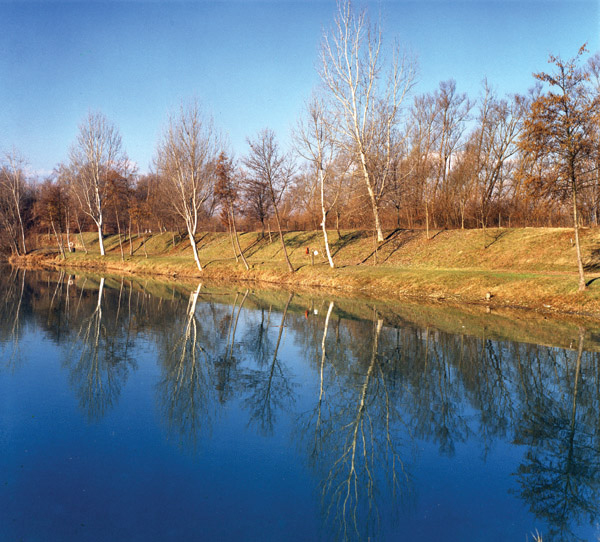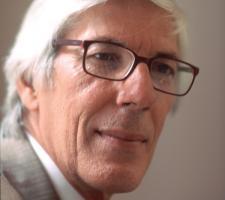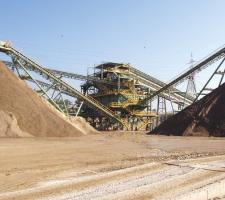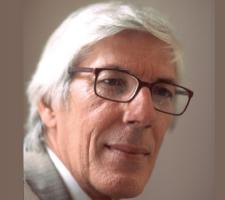
Cirino Mendola's 40 years of experience will stand him in good stead as he takes up the presidency of ANEPLA - the Italian aggregates federation - for the second time. Adrian Greeman reports
It is surely an honour to take on the role of president in the Italian aggregates federation, the Associazione Nazionale Estrattori Produttori Lapidei Affinia (
At that time he said the issues facing him and the association were much the same as now. Campaigning with government and officialdom continues as before in the same way as well, and he is hoping to bend ears and win attention for the association's interests in this presidency.
Industry status
In 2002 he was also recognised by the Italian industrial federation Confindustria, which invited him to join them during the last of his presidential terms. Such an invitation is a considerable honour in Italy and one that has been helping to give more weight to the association and its views.
That in itself was an achievement as one of the aims of ANEPLA, among its peers at least, is that the gravel and sand extraction industry should be recognised as being as much an industry, and making a contribution to the national economy as say, car production, agriculture or electronics.
"Today at least, quarries, if they are well managed and well planned, are considered on a par with any other industrial concern as functional activities useful to the economic system," he said.
"I think that our industry can be legitimately satisfied that our public interlocutors are beginning to understand the exploitation of a quarry as a natural resource, a raw material product which is precious and not renewable, and to be respected as part of land planning and resource use."
According to Mendola, in the past quarries were considered only transitory and an 'incidental' phenomenon and the possible impact on the environment was immediately highlighted and objected to, often even before anything had happened or production had started.
Despite some satisfactory progress in recent years he believes there is a long way to go in establishing the industry as fully accepted one in the mainstream economy.
Much of this, as he is well placed to know, lies in the fragmentary and localised nature of the industry which, for various historical and to some extent geographical reasons, is much more apparent in Italy than in most other countries.
He is well aware of the issues because he works for one of the largest of the European aggregate and cement production companies,
He had already developed experience and knowledge over a long period with one of the larger firms in the country, Cemente Milano, where he worked on helping to develop its ready mix concrete business from three to 18 plants during his time there. He was also instrumental in beginning its involvement in quarries and extraction too, which to him seems a natural enough development for a ready mix company.
National to multinational
It was an experience that would prove valuable once Holcim bought into the company and finally took it over, especially because he could help with the transition from national company to a multinational one.
"There is a different mentality," he explained. And perhaps nowhere more than in Italy with its own particular legacy of smaller scale enterprise. Whereas large-scale firms are increasingly significant in the markets in Europe, particularly in the UK and to an extent in Spain, France, Belgium and the Netherlands, and partly in Germany, they are still almost non-existent in Italy.
The big companies have perhaps 2.5% to 3% share of the overall production in Italy according to figures from ANEPLA. The rest is small to medium sized family companies typically.
"There are 1900 companies in Italy and they operate 2500 quarries or extraction pits," he pointed out. "That is only an average of 1.5 quarries to a company."
Such a number is possibly a reflection of the relatively recent national unity of Italy, and the still continuing regional fragmentation of much administration. It finds expression in many industries, with the small workshop a feature of the country and can have a positive side in generating enterprise perhaps but is also a complication in trying to find and operate production on a larger economic scale.
The other side of the coin is a multitude of small and lower level administrations to negotiate, most particularly the municipality which has many of the powers for granting licences for aggregates extraction. A city may be very large like Milan with a population larger than one million, but it can also be very small and local, sometimes with fewer than 50 inhabitants. "Some are not even large enough for a full time mayor," he said.
There are over 8000 such municipalities which take decisions. Above them are the 21 main regions with licensing powers and sometimes the provinces within them have powers delegated to them too. But the smaller bodies have to be negotiated with as well. "Each of these provinces makes its own rules," explained Mendola.
On top of that, Mendola said, is the problem of time limits. Most licences to extract are only for two or three years and must be renegotiated after that period. That might be a reflection of the particular geology of Italy which splits into the huge northern plain of the Po and Alpine rivers, a vast area of gravels, sands and silts washed down from the fast eroding mountains to the north, and the older mountainous geology of the middle and south of the country.
Aggregate production has focused on the more economically driven north where the gravel pit is the norm and therefore perhaps seen as a more transient production.
In the past aggregates were even won from river extraction though usually this is not allowed any more unless there are overriding considerations like dredging work and flood prevention which produce aggregate as a side benefit.
Production planning
But whatever the origins, the short time limits now are a considerable problem for larger enterprises, according to Mendola. "Companies want to be able to plan their production and budgets on a longer time scale, over 20 years perhaps," he said. "The current system stifles development and innovation - initiatives are paralysed by the impossibility of starting any far-sighted corporate strategy."
As a result Mendola believes that Italy suffers from major uncertainties in the administrative and regulatory framework.
Organised production at the pits and
growing care in planning extraction sites so that their environmental benefits and later recreational uses can be properly developed for communities is helping change things, according to Mendola. There are a number of examples of land being given over for parks and the careful landscaping of water filled pits, which feature extensively in the north of the country where the water table is high.
"People who have had quarries in their area before, can understand that the activity is alright and does not exceptionally affect life, and that later it will bring benefits in the form of a beautiful lake or something like that," he said.
But the fragmentary nature of regulation and administration is a major obstacle that he and ANEPLA are campaigning on.
National regulation
Mendola would like to see national regulation developed for the industry as it has been for the mining sector, both historically and in the years of increasing regulation by the
"The industry would also like a more rigorous and precise definition of the rules governing sources of production," he said, referring to what is required in terms of restoration, landscaping, environmental standards and the like.
This also includes that aggregate sources should be a criterion in all general planning, with surveys of where the best sources are located and their possible future use to be considered in all planning activities.
A confusing issue for the industry is constantly changing regulation on how unpolluted or non-toxic ground waste material from construction and other activities should be treated.
"For example, issues around land improvement in agriculture where aggregates are removed, the treatment of recovery material from quarries used in bigger public works and the treatment of construction demolition and waste," said Mendola.
Other issues that need attention include recycling and health and safety, he said. Recycling is not extensively practised in Italy, and developing much greater use is a priority for the industry.
All these issues should be drawn together into a national law, he argued. "Unfortunately regulation where it exists is too broken up and dispersed and what we need is a 'one-stop shop' as they say in the US," he said.
Something like that exists in the mining sector with integrated pollution prevention control or IPPC, according to Mendola, and regulation covers dust, noxious output, noise, water impact, and related issues. "Of course European law will help in some respects," he said, and Mendola is able to play a part in that too through representing the Italian industry at the UEPG.
But it may also work against it. The principles of subsidiarity, on pushing decisions as far down towards the region as possible, makes the achievement of national regulation more difficult on the surface. But it is not necessarily contradictory and a framework of rules for local decision making is certainly achievable. "Even though for us to get something like that would be a dream," he said.
So there is a busy time ahead for Mendola, with lobbying the regulatory authorities and government, visiting Rome when possible and bending ears. "Finally there is a need to explain the industry further to the public and to counter the "not-in-my-back-yard" NIMBY syndrome which can paralyse development," he said.











